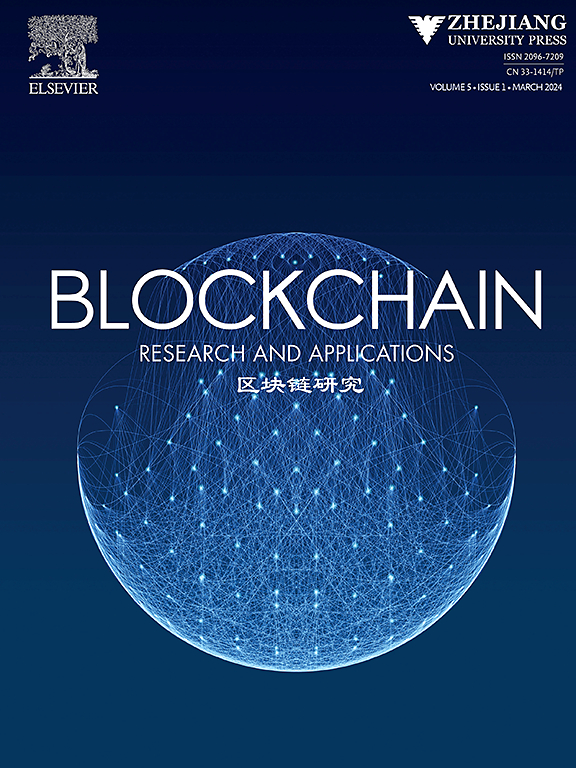A Layer-2 expansion shared sequencer model for blockchain scalability
IF 5.6
3区 计算机科学
Q1 COMPUTER SCIENCE, INFORMATION SYSTEMS
引用次数: 0
Abstract
Rollup stands out as one of the most effective techniques for blockchain Layer-2 scaling. By processing transactions off-chain, it significantly enhances the throughput. However, the most rollup implementations currently rely on centralized sequencers, exposing the system and users to censorship attacks and risking network paralysis. In contrast, fully decentralized sequencers encounter latency issues and reduced throughput during the consensus phase. We propose a multislot weighted leader election algorithm based on shared sequencers, apply the proposer–builder separation (PBS) model, and use the fuzzy cognitive map (FCM) to analyze and optimize the important influence parameters. With its low trust dependence and high functionality, the probability of selecting malicious nodes is reduced. The sequencing and consensus are separated, so that the transaction can quickly reach soft confirmation. We implement this algorithm in a shared sequencer prototype. The experimental results show that the proposed algorithm parameter settings are in line with the expectations, and the probability of electing malicious nodes is significantly reduced. The transactions per second (TPS) of the network can cope with the throughput requirements of the Layer-2.
区块链可扩展性的第二层扩展共享序列器模型
Rollup是区块链第2层扩展最有效的技术之一。通过处理链下交易,它显著提高了吞吐量。然而,大多数rollup实现目前依赖于集中式测序器,这将系统和用户暴露于审查攻击之下,并有网络瘫痪的风险。相比之下,完全分散的测序器在共识阶段遇到延迟问题和吞吐量降低。提出了一种基于共享序列的多时隙加权领袖选举算法,采用提议者-构建者分离(PBS)模型,并利用模糊认知图(FCM)对重要影响参数进行分析和优化。该算法具有较低的信任依赖性和较高的功能性,降低了选择恶意节点的概率。排序和共识分离,使交易能够快速达到软确认。我们在一个共享的音序器原型中实现了这个算法。实验结果表明,提出的算法参数设置符合预期,显著降低了恶意节点的当选概率。网络的TPS (transactions per second)可以满足第二层的吞吐量要求。
本文章由计算机程序翻译,如有差异,请以英文原文为准。
求助全文
约1分钟内获得全文
求助全文
来源期刊
CiteScore
11.30
自引率
3.60%
发文量
0
期刊介绍:
Blockchain: Research and Applications is an international, peer reviewed journal for researchers, engineers, and practitioners to present the latest advances and innovations in blockchain research. The journal publishes theoretical and applied papers in established and emerging areas of blockchain research to shape the future of blockchain technology.

 求助内容:
求助内容: 应助结果提醒方式:
应助结果提醒方式:


